Painting using geometrical shapes is a wonderful way for an artist to express their emotions and feelings.
Geometrical shapes show emotion because curving shapes such as circles depict calmness whereas sharp-edged shapes like squares depict agitation. In addition, light-coloured shapes convey happiness whereas dark-coloured shapes convey sorrow.
Therefore, the shapes an artist uses can have a big impact on the way you, the viewer, interprets and emotionally connects to the artwork.
So, what are some examples of famous geometric paintings that masterfully show emotions?
Keep on reading to discover the artists. You’ll probably recognize some of their paintings!
DISCLOSURE: This article is written by Lianna M. She has generously taken her time to write this guest post so that she may share her artistic knowledge with you. Have fun reading!
Table of Contents
Painting Using Geometrical Shapes
Human beings recognize shapes before they recognize the language.
Geometric shape painting has a broader range of emotional depth and interpretation as it is not limited by reality or actual depictions.
All the famous geometric art have one thing in common: geometric abstraction. It is a secondary form of abstract art that uses geometric shapes combined in non-realistic arrangements and placed in non-illusionistic space.
Shapes with edges, like squares and rectangles, represent distress and agitation. However, curves, like a circle, stand for calm and happy emotions.
Dark colors illustrate sorrow and depression, while bright colors depict merriment. Shape paintings with cluttered, messy shapes and colors show bewilderment, while minimalistic use of the same expresses a peaceful state of mind.
Let us scout famous geometric artists’ works to understand better how emotions are often wrapped up in shapes!
Weeping Woman by Pablo Picasso
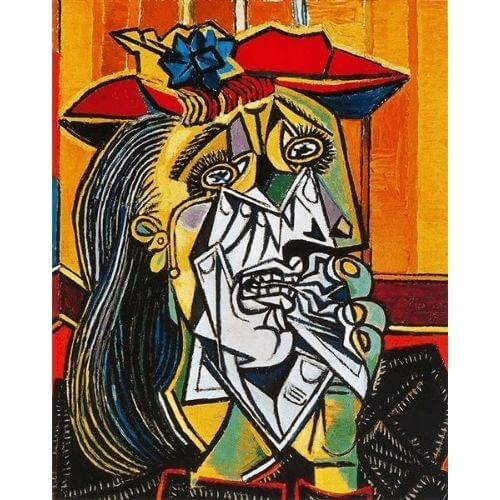
“Weeping Woman,” painted in 1937, is an extension of Picasso’s anti-war mural, “Guernica.” The painting addresses the explosion of the Basque town of Guernica during the Spanish Civil War. The subject of Picasso’s shape painting is his mistress and muse, Dora Maar.
Picasso depicted the sufferings of the war through a weeping, agonized Maar, clutching a handkerchief to her face to stop her constant tears.
The broken lines represent a shattered mirror. The grey color on the lower half of her face depicts her lifelessness and dullness, while the green represents the soldiers’ illness.
The sharp edges of triangles distort her face, bringing out her struggles. The broken geometric shapes are parallel to the vanquished existence during times of war.
The focus is entirely on her contorted and sad face, which brings out the somber mood of this geometric art.
Composition VIII by Wassily Kandinsky

Created in 1923 by Russian painter Wassily Kandinsky, “Composition VIII” is an abstract geometric shapes painting that has irregular and erratic geometrical shapes as its subject.
The ideas of Suprematism and Constructivism inspired this artwork but have geometric abstraction as the central theme.
The artwork has varied shapes, lines, colors, and textures, with a cream and blue background that seems to blend into each other.
The left side of the painting has more significant, more defined shapes, while the right is a combination of small, overlapping lines and forms.
The dominance of circles in his paintings, according to Kandinsky, is a “synthesis of greater oppositions.”
The eclipse, represented through the concentric circles of purple inside black, combines the cosmic world and transcends it into a fourth dimension.
Black Square by Kazimir Malevich
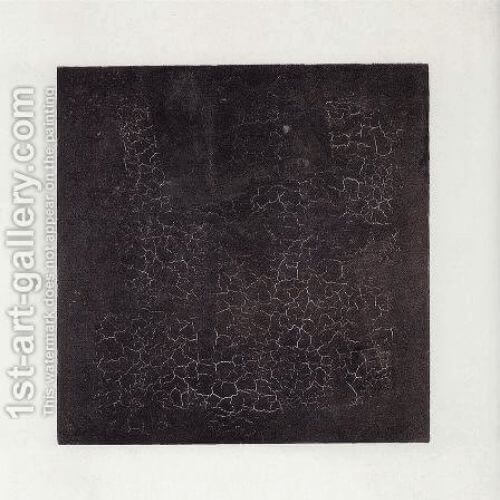
One of the most intriguing and iconic masterpieces, “The Square,” represents Malevich’s attempt to disregard reality completely.
The painting omits all social standards of art by illustrating a simple black square on a white surface. The absence of shading and a subject expresses a void, a starting point of creation. The existence of its nothingness is a fascinating paradox.
It best represents supremacy as the black color, and the square shape is the only focus point. Malevich wanted his viewers not to be distracted by any person or scenery.
It also depicts the complete darkness and chaos that World War I commenced. The fascinating factor of this painting is its vibrant and subjective interpretations that still keep connoisseurs brainstorming.
Broadway Boogie Woogie by Piet Mondrian
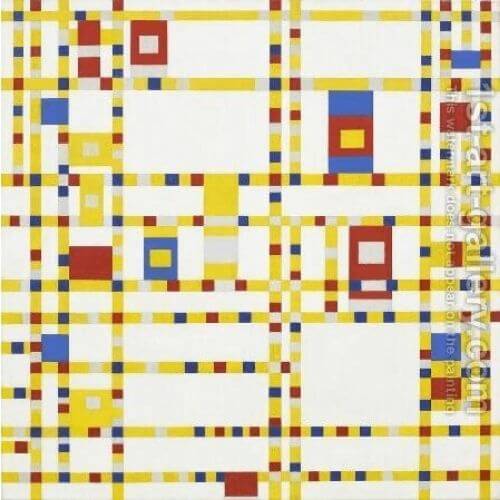
A 1943 geometric art, “Broadway Boogie Woogie” by European artist Piet Mondrian, features straight vertical and horizontal lines with a limited color palette.
The lines, consisting of tiny squares of blue, yellow, red, and white, represent the animated streets of Manhattan city. Broadway of New York is full of energy, light, and life, just like the painting.
It is on these streets that Mondrian fell in love with boogie-woogie music. The vigorous squares create an intersection, forming the traffic of New York, while the grey block represents the streets.
The geometric shape and color may also signify the notes and tempo of Mondrian’s much-beloved Broadway music.
The Maiden by Gustav Klimt
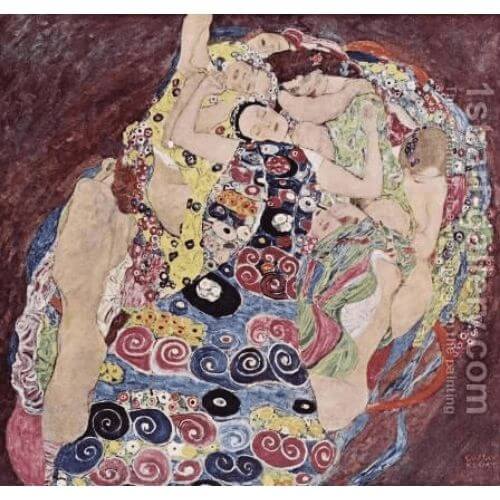
“The Maiden” by Austrian painter Gustav Klimt is a complex oval-shaped assemblage of seven women in a dream state, painted in 1918.
The woman in the center, dressed in a purple gown with quilts and spirals, dreams of possibilities embedded in the six women encompassing her.
The spiral shapes on the gowns represent women’s fertility and the continual evolution of the universe. The colors used are spirited and varied and depict the vitality of women’s purity.
Gustav was often known for eroticizing his subjects, especially women. He broke the conservative shackles of cultural morality and liberated sensuality.
Conclusion
Geometric painting has transformed the world of art by equating emotions with shapes and forms.
Some famous geometric art is available at the 1st Art Gallery, which is the world’s largest supplier of handmade portraits and Made-to-Order oil paintings. So tour the website and unravel the depth of emotions hidden behind geometrical shapes!
In this article, you’ve learned that painting using geometrical shapes helps artists express their emotions. As such, do you believe that this style of art has positive benefits on mental health? Share your opinion in the comments below!
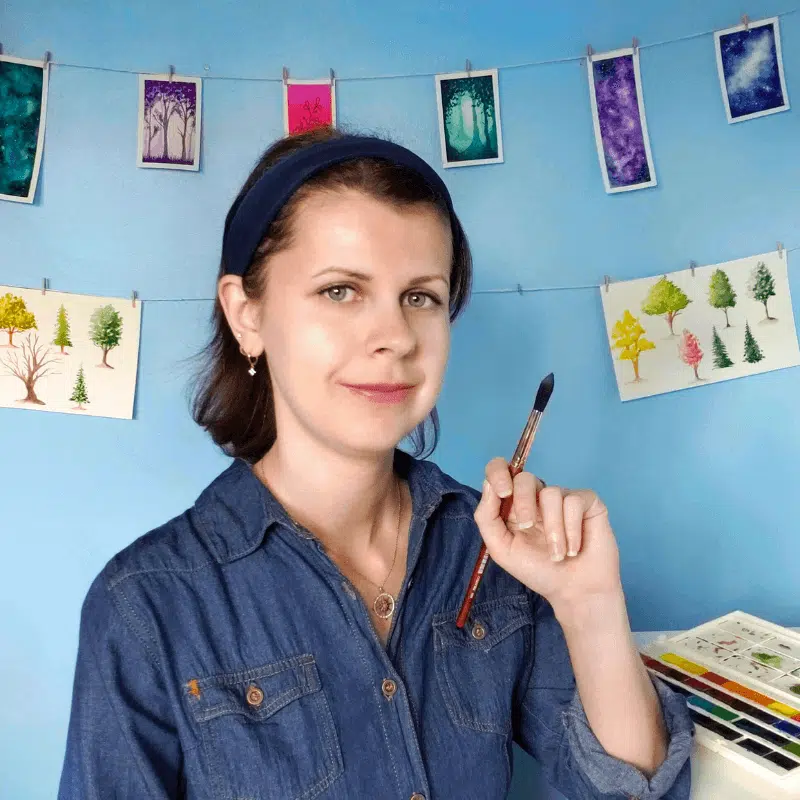
Miranda Balogh
Artist & Online Educator

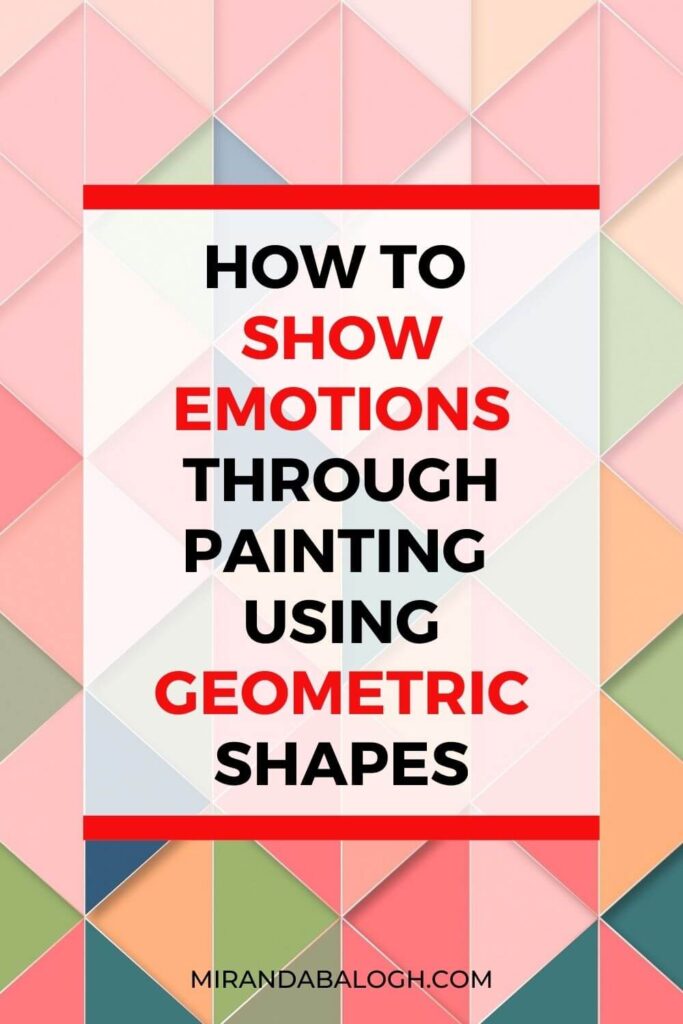




Yes, I have been a geometric abstract artist for the past 15 years and I think this style has helped me to overcome my emotions. I am still practicing this form of art.
Awesome! I’m glad to hear that creating geometric art has been good for your well-being.